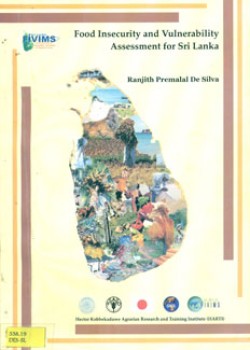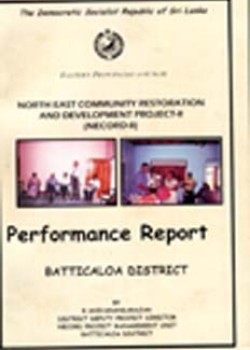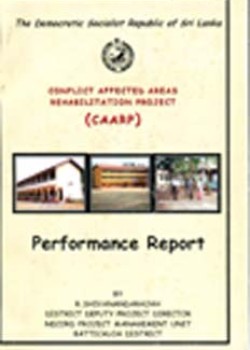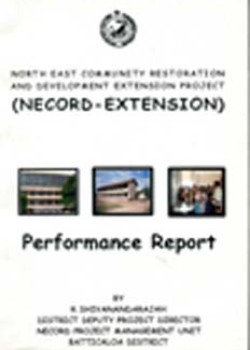
Food Insecurity and Vulnerability Assessment for Sri Lanka
Author : De Silva, R.P.
Publisher: Food and Agriculture Organisation (FAO) and Hector Kobbekaduwe Agrarian Research and Training Institute (HARTI)
Place of Publish: Thailand, Bangkok
Year: 2006
Page Numbers: 82
Acc. No: 3840
Class No: 338.19 DES-SL
Category: Books & Reports
Subjects: Food Security
Type of Resource: Monograph
Languages: English
ISBN: 955-1308-03-4
Climatic conditions prevailing in Sri Lanka are suitable mainly for the production of agricultural food crops, however, in terms of national food security, problems exist in some parts of the country. Vulnerability to food insecurity refers to a wide range of factors which push people at risk of becoming food insecure. Food Insecurity and Vulnerability Information Mapping System (FIVIMS) in Sri Lanka helps to identify areas highly vulnerable to food insecurity. It also provides details on the causes of vulnerability. Identification of the factors causing food insecurity and vulnerability will assist policy and decision makers to resolve the issues associated with the vulnerable areas and to better identify and characterize the problems.
In this publication the food insecurity and vulnerability status of the country has been evaluated from the district level. The outputs reflect results that differ from area to area, depending on the variables considered for estimation. The category-wise analysis that was adopted has shown to be crucial as it helps to identify the different factors to be considered when planning interventions and mitigation measures related to food insecurity and vulnerability. Further, the composite vulnerability index gives the general idea of the country and is important for management and planning, especially for policy makers.



